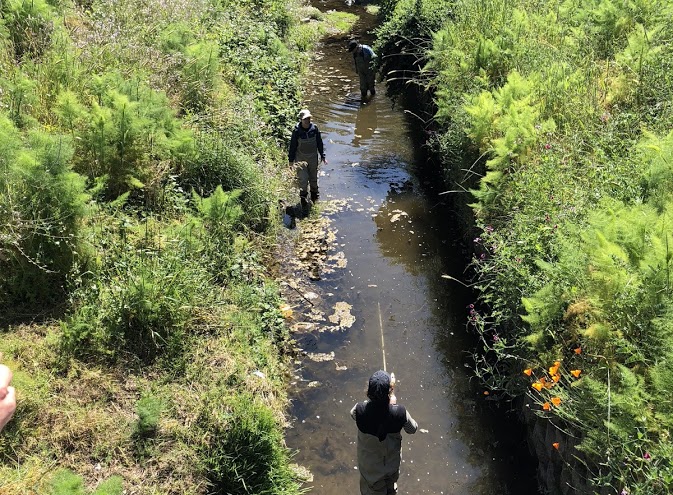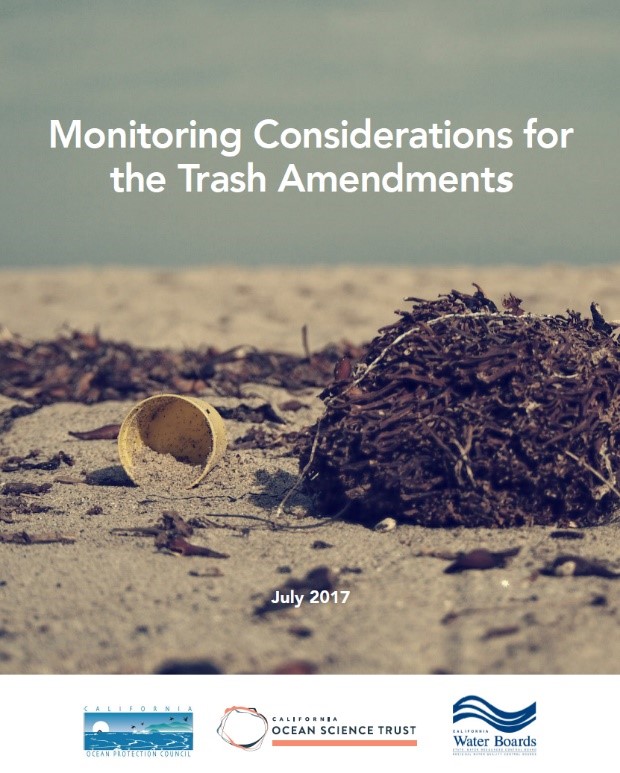Scientific Trash Monitoring Projects
In 2015, the State Water Resources Control Board (Water Board) adopted an amendment to its water quality control plans for both inland waters and ocean waters. Collectively, these are referred to as the Trash Amendments. The Trash Amendments prohibit the discharge of trash larger than 5 millimeters into stormwater systems. The Ocean Protection Council supported the adoption of the Trash Amendments and values the use of scientific measures to track and verify program effectiveness. Currently there is no agreed-upon scientific method to monitor for trash in water. This makes assessing progress on reducing trash in state waters difficult. To that end, the Ocean Protection Council is working with the Water Board on a series of projects to develop, validate, and educate interested organizations about scientific trash monitoring methodologies.
Trash Monitoring Methods Field Testing, Validation, and Standardization Project
On April 26, 2017, the Ocean Protection Council approved funding for Research and Development of Scientific and Standardized Trash Monitoring Methods to Effectively Implement the Trash Amendments. The Southern California Coastal Water Research Project is partnering with the San Francisco Estuary Institute to complete the project. This three-year project aims to develop, validate, and field test scientific trash monitoring methods in water and stormwater channels. The objectives of the project are to:
- Field test approximately four methods to monitor for trash in receiving waters. The four methods anticipated for testing are:
- In-stream visual assessments
- Terrestrial imagery*
- Aerial imagery in streams*
- Aerial imagery in wetlands*
- Convene a technical advisory committee to provide advice and input throughout the project on methods to test, improvements to existing methods, and other areas of interest.
- Communicate with stakeholders about the project, the methods development and testing, and provide opportunity for Water Board permittees to learn how to effectively monitor their receiving waters.
The goal of the project is to develop a library of methods with known levels of precision, accuracy, and cross-comparability of results, and linking these methods to specific management questions. To learn more about the Trash Monitoring Methods Field Testing project, click here: https://sites.google.com/sfei.org/trash/home.

Monitoring Considerations for the Trash Amendments
The Ocean Protection Council funded Ocean Science Trust to develop Monitoring Considerations for the Trash Amendments, a report synthesizing information from past research on trash monitoring to provide monitoring considerations and guidance for permit writers and permittees when developing trash monitoring programs.
Workshop Addressing Trash Monitoring Science Needs
On April 18-19, 2017, the California Ocean Protection Council and the State Water Resources Control Board hosted a workshop to:
- Develop a shared understanding of the key and unresolved issues surrounding trash monitoring
- Develop a list of the main management questions that would guide trash monitoring and examples of the scientific monitoring questions that would provide the parameters to select monitoring methodologies and protocols.
- Provide recommendations and input to the trash monitoring methods field testing, validation, and standardization project (described in the section below).
An agenda, workshop summary and expert presentations from the workshop are available below.
- Agenda
- Workshop Summary
- Presentations on Process and Conceptual Modeling
- Presentation on the Methods Field Testing, Validation, and Standardization Project (see trash monitoring section above)
- Presentations on Prior Trash Monitoring Projects, Lessons Learned, and Emerging Technologies
- Tracking California’s Trash Project: Testing Trash Monitoring Methods in Flowing Water Bodies – Carolynn Box
- Bight 13: Trash from the Rivers to the Sea – Shelly Moore
- San Diego Bay Debris Study – Ted Von Bitner
- Tech and Trash in California Waters – Kate Wing
- Trash In Receiving Waters Case Study – Tony Hale


